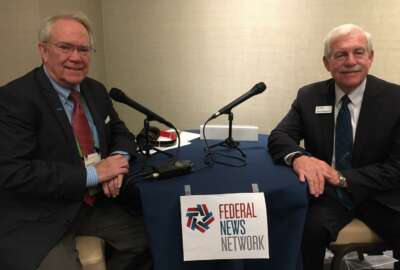

State CIOs and NASCIO went virtual for this months midyear conference, and NASCIO executive director Doug Robinson discussed state CIOs extraordinary successful...
Editor’s note: This interview was recorded prior to the NASCIO Midyear 2020 Webcast Series events.
Our friend, Doug Robinson, the National Association of State Chief Information Officers (NASCIO) executive director for the last 16 years, spoke with us last week about his organization, the effect of the pandemic on its membership, and most importantly, plans to substitute a virtual meeting for this spring’s conference entitled the NASCIO Midyear 2020 Webcast Series.
This week should have capped off NASCIO’s 50th anniversary year with its Midyear Conference taking place just outside of Washington, D.C. The coronavirus had other ideas, however, and forced NASCIO leadership to switch over to a virtual event. Fortunately, the NASCIO program committee which takes the lead in organizing the conference agenda and speakers was able to pivot fairly quickly to a virtual environment for this Monday and Tuesday, May 4-5, featuring many of the planned speakers and panelists previously scheduled for the in-person event.
And apparently, it looked like a very popular affair. Robinson said they planned to have about 600 to 700 registered. While NASCIO in-person events are truly invaluable, particularly from the networking side, certainly the remote, virtual aspect is an attractive alternative, given the times.
In addition to NASCIO’s midyear conference activities, it’s always enlightening to hear from Robinson about the ever changing roles, impacts, and even the numbers in the state CIO ranks. One thing is certain, for better or worse, the pandemic has certainly raised the visibility of state government IT leadership. Robinson and I both agree that it has been the former. While there is an ever growing cadre of state CIOs who are members of their governors’ cabinet, probably only a dozen or so have this particular distinction. While all state CIOs are appointed by their governor, cabinet rank remains elusive. Although with each gubernatorial election this seems to change, and from what Robinson and I have both seen over the last three months, we expect this trend to accelerate.
The reason for this goes back to the state CIO visibility issue I mentioned earlier. Since the shelter-in-place proclamations were first being considered by governors across the country back in March, you can bet that that decision followed an intense meeting with the governor and the state CIO. The question was simple. Could the government still function with the majority of state employees working at home?
Remember while those dozen cabinet level CIOs see their governor on a regular basis, unfortunately, most would have to admit that such personal meetings with their CEO were confined to retirements and Christmas parties. The vast majority just don’t have access, particularly on a regular basis.
However, this pandemic has forced the governors to rely on their CIOs for nothing short of keeping their ship of state afloat, a daunting challenge. State CIOs and in fact their entire IT staff have been designated as essential employees just like first responders and healthcare professionals. And from all reports they have performed most admirably.
This calamity as we know is far from over. There will be after action reports which will further detail the extraordinarily efforts of state CIOs. Unquestionably though, there will also be continuity of operations planning weaknesses exposed, lessons learned the hard way, and copious examples of “better” practices. And legacy app weaknesses like unemployment systems which were laid low by the jobless surge come to mind as well. However, on the whole, as Robinson has attested, most states have performed extraordinarily well.
As a result, there will be opportunities for governors, particularly those who in the past only dealt with their CIO briefly and occasionally, to re-evaluate their state’s IT leadership. The states able to galvanize their telework infrastructure, to quickly procure the necessary devices, networking software and cybersecurity tools to successfully continue operations under the leadership of the state CIO will not go unheralded. In fact, they’re heroes, and this has been their finest hour.
I would expect that as a result of this experience we will see a number of governors come to the conclusion that state CIOs belong in their administrations’ leadership ranks, not retired again back into bureaucratic oblivion. The cabinet level position for the state CIO will become the norm.
One final note, on the lighter side, among this entire coronavirus experience, Robinson pointed out that several state CIOs actually were just appointed in the last few months.
“You have to kind of reflect and realize that we have CIOs that came on board in January and February and one as late as early April,” he said.
Well, I think we can assure them that this is a black swan, a hundred year pandemic, a once in a century nightmare, an extraordinarily challenging experience which will not be repeated on a regular basis. We hope. Otherwise, heroes or not, their resignations might be coming.
Copyright © 2024 Federal News Network. All rights reserved. This website is not intended for users located within the European Economic Area.



